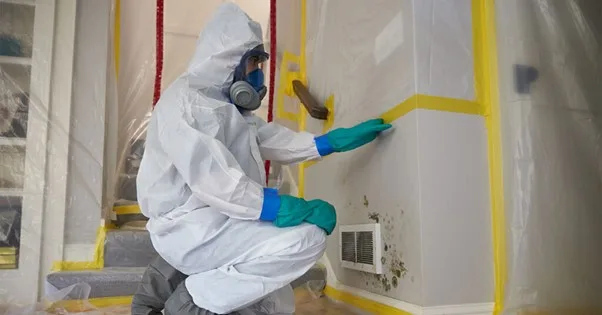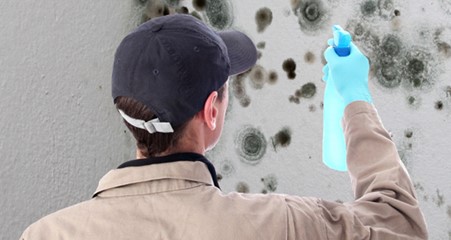People’s comfort and well-being are dependent on having access to fresh, clean air within their homes, businesses, and other buildings. It is, nevertheless, one of the things that are often overlooked, especially in business situations.
Many people are unaware that poor indoor air quality has negative health consequences. This may be caused by a variety of factors, including defective air conditioning equipment and inadequate ventilation.

In this article, we will talk about 8 factors that affect indoor air quality and ultimately your health.
So, without wasting any more of your time, let’s get to the main content.
The Health Risks Associated with Poor Indoor Air Quality
Long and short-term exposure to poor indoor air quality has a range of major health consequences. Air quality may impact a variety of bodily organs and functions, and the symptoms can be difficult to distinguish from other common ailments like the cold or flu.
Some of the most prevalent symptoms are as follows:
- Eyes irritation: The fragile tissue of the eyes is readily affected by airborne particles or evaporated gases.
- Congestion in the nose: Our nostrils filter the air we breathe and protect our lungs; when air quality is bad, the nose is often the first to be impacted.
- Headache: Dust, allergens, odors, and other factors may all provoke this frequent allergic reaction.
- Problems with the skin: The skin is our greatest organ, and indoor air quality has a significant impact on it. Air pollution may cause your skin to become dry, itchy, or irritated.
Read Also:
Factors Influencing the Quality of Indoor Air and Your Health
Most residential and commercial constructions nowadays are designed to be airtight to enhance energy efficiency. Airborne pollutants, on the other hand, may accumulate within buildings with nowhere to go, affecting indoor air quality.
Following are some of the variables that contribute to poor indoor air quality and your health:
1. Chemicals
Bad odors and irritation of the eyes, nose, and throat are two typical complaints about poor indoor air quality. Irritation may be caused by particular substances, but it can also be caused by environmental conditions such as dry air.
Bad odors are not hazardous in and of themselves, but they may induce unpleasant effects and exacerbate symptoms such as headache, nausea, and eye or throat discomfort.
Chemical dangers and their consequences on health are not usually completely understood, especially for long-term exposures.
2. Radon
Radon is a gas that naturally originates in soil and rock in certain areas and may enter buildings by diffusing through the earth. It may cause lung cancer when inhaled inside.
3. Microbes
Fungi and viruses, for example, may have a role in the development of asthma and allergies affecting the airways. This is an issue in wet buildings or indoor spaces with mold since many fungi emit chemicals that trigger allergies.
Virus infections may also be transferred via indoor air, and certain of them can worsen asthma and allergies.
4. Animals and Pests
Pests, home dust mites, cockroaches, and – particularly in urban areas, mice are significant allergen sources. These allergens may cause airway illnesses such as rhinitis and asthma. The amount of exposure varies according to the kind of surroundings and cultural customs.
It is unknown how much interaction with pets impacts the development of asthma in humans. Allergy sufferers, on the other hand, should avoid contact with allergenic substances.
5. Humidity
The humidity level in indoor air is ideal. Too little humidity causes eye discomfort, dry skin, and rashes, while too much humidity causes water damage, mold issues, and the spread of dust mites.
6. Ventilation
It is one of the most essential aspects in determining the quality of indoor air. Poorly ventilated businesses and schools, for example, may harm health and job or academic performance. Controlled ventilation is particularly important in substantially insulated structures with limited air interaction with the outside world.
7. Temperature
Indoor air that is too cold or too hot is not only uncomfortable, but it is also dangerous. Too-warm air, for example, exacerbates the consequences of inadequate humidity.
8. Mold Spores
Mold is a frequent concern in houses, but it’s generally mistaken in terms of physical damage rather than its impact on your indoor air quality.
Mold spores are one of the most often identified particles during home air quality testing, indicating that mold’s impact extends beyond the aesthetic and physical damage to your house, it affects your respiratory and physical health as well.
The only way to get rid of them is to have them tested by mold testing services near you and for other indoor common allergens.
This way, you will not be left guessing and hampering the indoor air quality.
So, what are you waiting for?
Get your house tested for any mold or mildew before it’s too late.
Please contact us online or by phone at 201-500-1800 for more information on indoor air quality testing.











